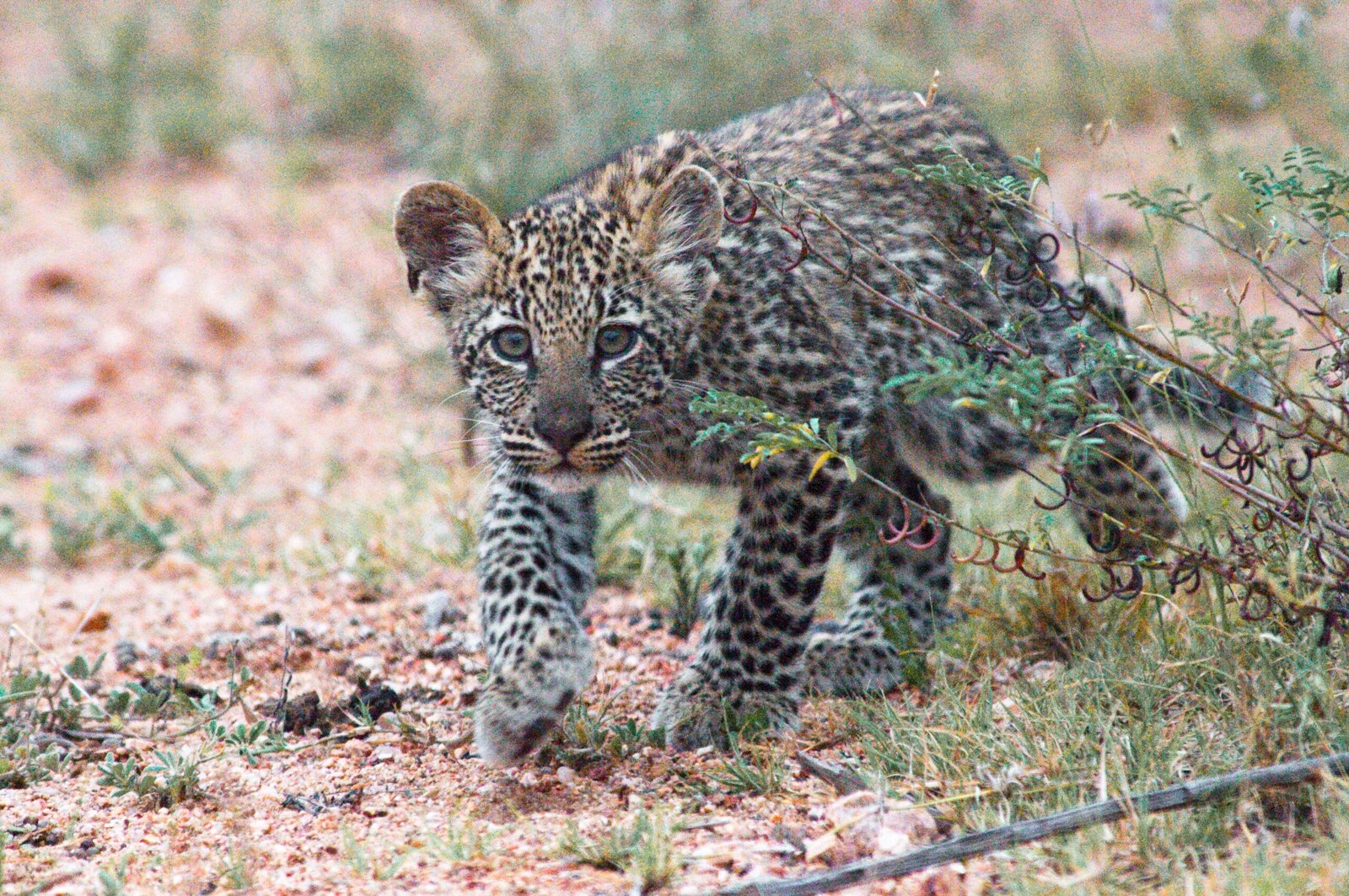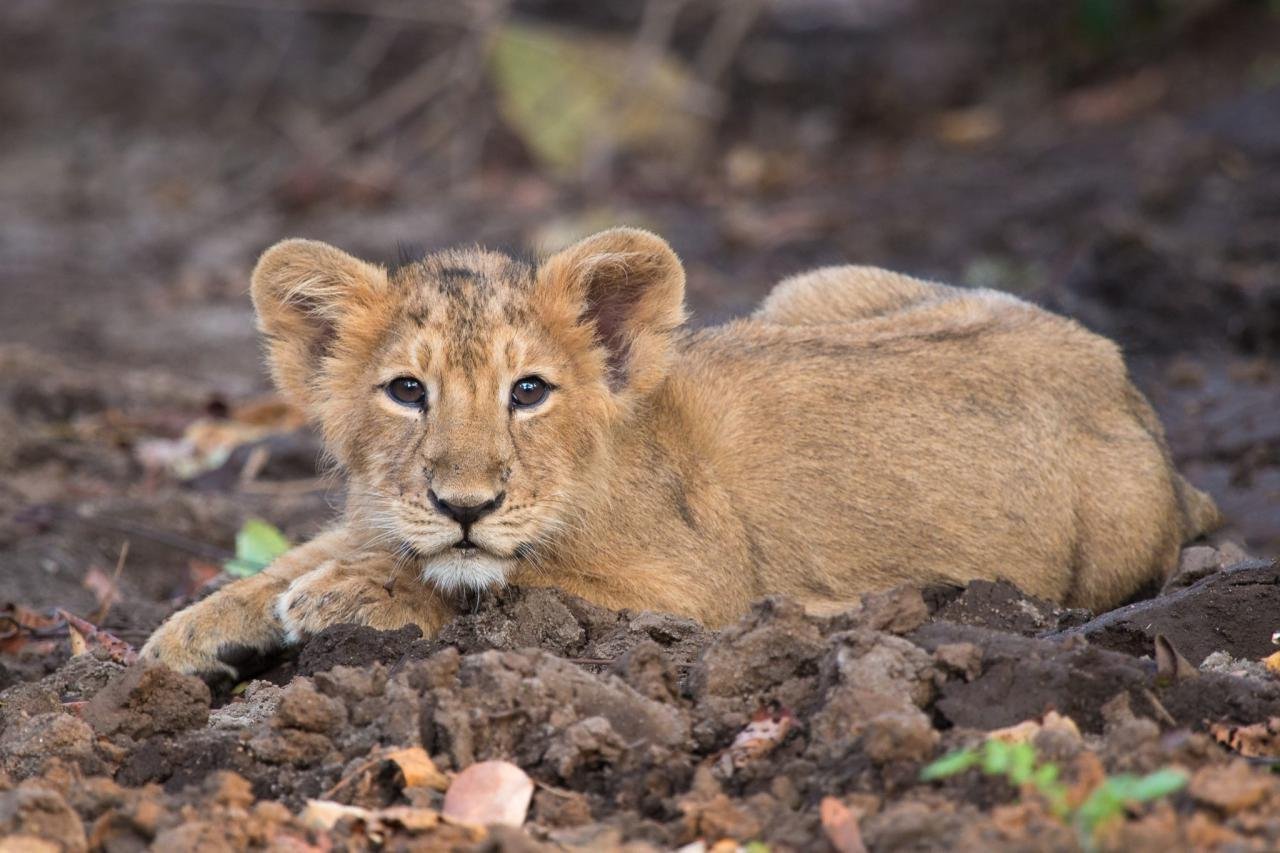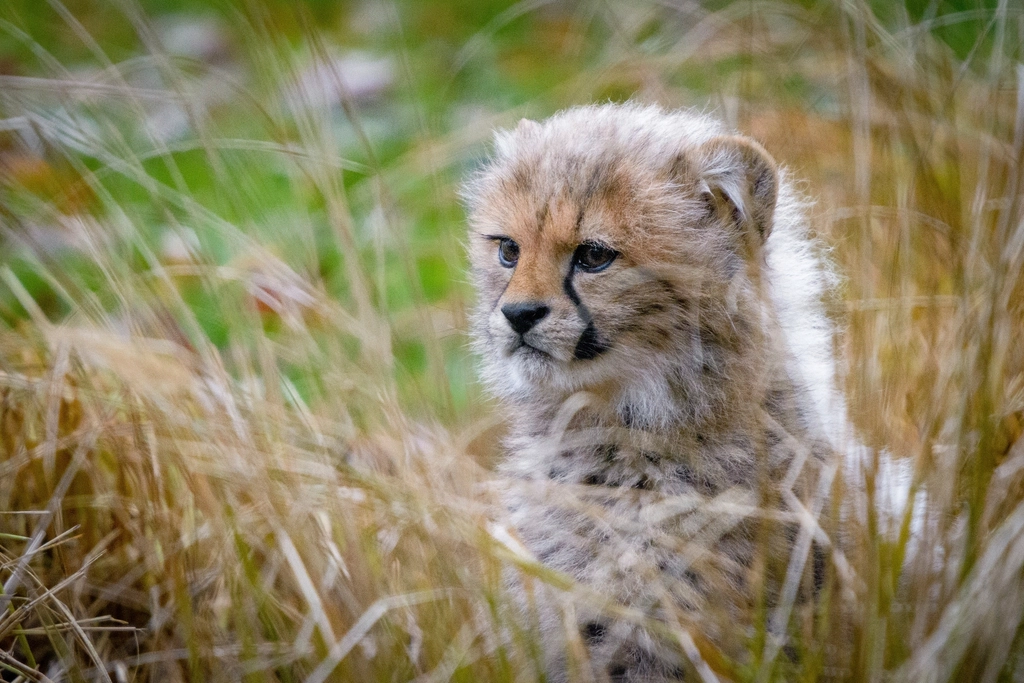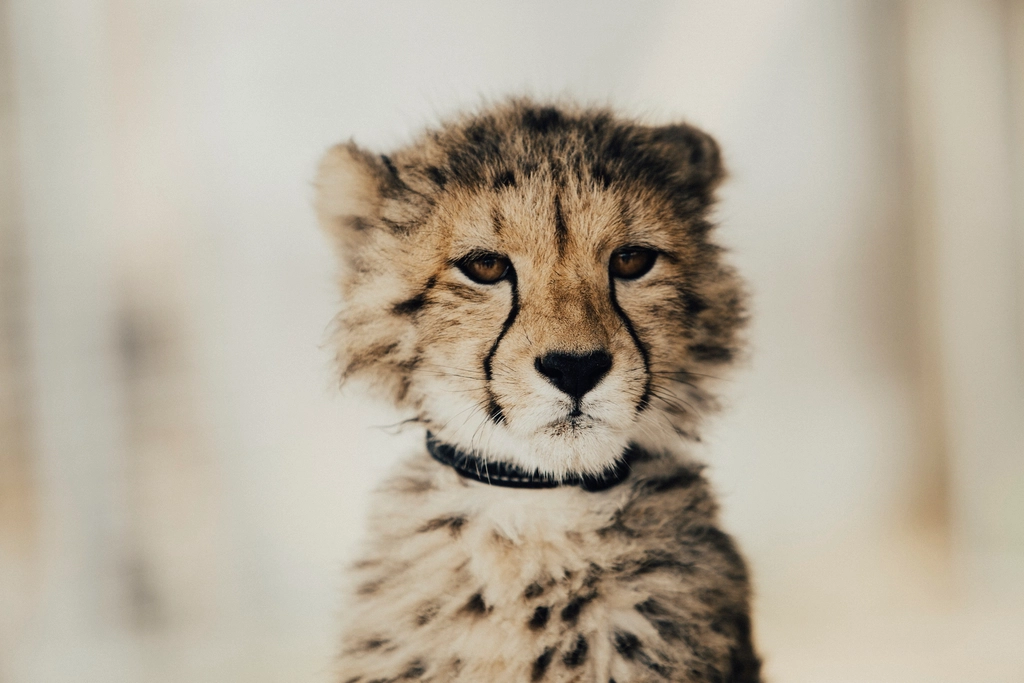It’s hard not to feel your heart skip a beat when you glimpse leopard cubs for the first time—small, spotted, and full of untamed possibility. These particular cubs, though, have a story with a twist: though born behind human-made walls, their destiny isn’t to remain on display but to reclaim the wildness that’s their birthright. Their journey is a delicate dance—balancing safety with freedom, and nurturing innocence into independence. In their every leap and playful pounce, there’s a promise of hope for a species fighting for its place under the sun. Raising leopards for the wild is a labor of love and patience, a testament to the belief that nature, given the chance, can flourish again. Let’s step into their world and discover the magic and challenge of preparing these little predators for a life beyond the fence.
Tiny Spots, Big Dreams

When leopard cubs are born, their spots are like confetti—scattered and soft, hinting at the bold patterns they’ll grow into. In captivity, their first days are gentle, with keepers watching over them like anxious parents. The cubs’ eyes open slowly to a world that’s both safe and strange, where every sound and scent is new. Yet, even in these protected beginnings, there’s a wild spark in their gaze. It’s as if, deep down, they sense there’s more waiting for them beyond the enclosure. Their tiny bodies twitch with excitement during sleep, maybe dreaming already of hunting and climbing. Even as bottle-fed babies, their wildness glimmers through. Every spotted tail flick is a quiet promise to the future, and watching them grow feels like witnessing both a miracle and a responsibility. There’s something deeply moving about seeing such fragile life destined for untamed places.
Learning to Hide and Seek

One of the first lessons these cubs learn isn’t how to roar or run—it’s how to disappear. In the wild, survival often depends on being unseen. In their enclosure, keepers scatter leaves, branches, and logs, encouraging the cubs to practice hiding. The little leopards crouch low, their spots blending perfectly with dappled shadows. This game of hide and seek is more than play—it’s essential training. Sometimes a cub will freeze, eyes wide, listening for imagined threats. The thrill is real, even if the only “predator” nearby is a curious caretaker. By practicing stealth early, the cubs build instincts that may one day save their lives. There’s a quiet joy in watching them vanish into a patch of sunlight, almost as if they’ve become part of the forest itself. Each successful hiding spot is a small step toward freedom.
The Sound of Wild Voices

Leopard cubs don’t just grow into their spots—they grow into their voices, too. At first, their calls are tiny squeaks and chirps, almost like birds. But as weeks pass, their vocalizations deepen into raspy mews and guttural growls. In captivity, keepers mimic wild sounds, playing recordings of rustling leaves or distant thunder to help the cubs grow comfortable with the unexpected. Sometimes, the cubs “talk” to each other in soft, secretive tones, practicing their language without even knowing it. Their voices become a bridge—a way to connect with each other and, eventually, to warn off rivals or call to mothers in the wild. It’s astonishing how quickly these little ones learn the vocabulary of survival. Every meow and hiss is a rehearsal for a life where every sound might carry meaning, danger, or hope.
Paws Built for Adventure

Have you ever noticed how a leopard’s paw is both delicate and powerful? For cubs, their oversized paws seem almost comical at first, flopping as they tumble over each other. But those paws are miracles of design, packed with nerves, muscles, and tiny, retractable claws. In their safe, leafy playgrounds, cubs learn to use them for climbing, pouncing, and even gentle wrestling matches. The keepers encourage this with branches and climbing posts, knowing that strong paws mean strong chances in the wild. Every wobble and slip is part of the learning curve. Over time, those clumsy paws become the silent tools of hunters—able to scale trees, grip prey, and vanish without a trace. Watching a cub’s paw print in the mud is a reminder: one day, it could be lost among the tracks of a wild forest, right where it belongs.
First Taste of Freedom

There’s something unforgettable about a leopard cub’s first step onto grass and dirt, outside the safety of its nursery. The world seems impossibly big—every leaf rustles, every shadow beckons. At first, they’re cautious, noses twitching with curiosity and uncertainty. Keepers watch from a distance, letting the cubs explore but ready to help if needed. For a moment, the boundaries between captivity and wilderness blur. Cubs taste the air as if sampling a secret recipe, their senses coming alive. Even the sun seems to shine differently, glinting off their coats. These early outings are carefully supervised, but the thrill of discovery is real and raw. It’s the first hint of what’s to come—a life where each day brings new wonders and challenges. Watching a cub’s hesitant, hopeful steps, you can’t help but feel a surge of hope for their future.
Bonding With Siblings

Leopard cubs are rarely born alone—most have at least one sibling to share their earliest adventures. This bond is fierce and tender, a mix of rivalry and companionship. They tumble together, mock-fighting and chasing tails, learning the rules of play that will one day become the rules of survival. In captivity, these rough-and-tumble games are more than just fun—they help cubs gauge their own strength and test boundaries. Sometimes, a tired cub will curl up on its sibling, finding comfort in a warm, beating heart. The keepers celebrate these moments, knowing that strong sibling bonds build resilient, adaptable adults. Even when they squabble, there’s an undercurrent of love and loyalty. It’s a reminder that, like us, leopards need family—someone to share the journey, from playful cub to independent hunter.
Lessons From Their Mothers

Even in captivity, the role of a mother leopard is irreplaceable. If possible, cubs are raised with their mothers, who teach by example: how to groom, how to stalk, how to show caution. The mother’s presence is calming, her purr a lullaby that soothes anxious hearts. She’ll gently correct a cub’s clumsy moves, guiding them with patient nips and nudges. Watching a mother leopard with her cubs is like watching an artist at work—each gesture purposeful, each lesson essential. When mothers aren’t available, skilled caretakers step in, doing their best to emulate wild behaviors. But there’s no substitute for a mother’s instincts. Her influence lingers long after the cubs go free, woven into every move they make. It’s a powerful reminder of the importance of family and the irreplaceable wisdom passed down through generations.
Curiosity and Caution

Leopard cubs are natural explorers, driven by curiosity that sometimes outruns their caution. Every new object—a feather, a beetle, a stray leaf—is met with wide-eyed fascination. But instincts run deep, and even tiny cubs sense when to freeze, hide, or retreat. Caretakers walk a fine line, encouraging exploration while gently enforcing boundaries. It’s a dance between letting them learn and keeping them safe. Sometimes a cub’s curiosity leads to hilarious moments—a startled leap from a frog or a suspicious glare at a fluttering butterfly. These moments are precious, teaching both the cubs and their keepers about the importance of balance. Curiosity fuels learning, but caution ensures survival. In every careful step and bold dash, there’s a glimpse of the adult leopard they’re destined to become—brave, clever, and always a little mysterious.
Mastering the Art of Stalking

Hunting is more than a skill for leopards—it’s an art form, learned through endless practice. In captivity, cubs are given toys that mimic prey, encouraging them to crouch, stalk, and pounce. The first attempts are often clumsy, with tails twitching and paws slipping over soft grass. But with each try, their movements become smoother, more deliberate. The thrill of the chase is written in every muscle, every narrowed eye. Keepers sometimes hide treats in tall grass, letting cubs use their senses to seek and capture. These games are more than just entertainment—they’re dress rehearsals for the wild. The satisfaction on a cub’s face after a successful “hunt” is unmistakable. It’s not just about food—it’s about confidence, independence, and the joy of doing what leopards are born to do.
Climbing to New Heights

Leopards are famous for their climbing skills, and cubs start scaling obstacles almost as soon as they can walk. In their enclosures, branches and platforms of all sizes become mountain ranges and lookout towers. At first, they might wobble or hesitate, but soon they’re leaping from one perch to another with fearless abandon. Climbing isn’t just play—it’s a vital survival tool, allowing leopards to escape danger and stash food away from scavengers. The strength and coordination needed to master this skill starts early, with every clamber building muscle and confidence. Watching a cub perch high above the ground, surveying their tiny kingdom, is both adorable and awe-inspiring. It’s a preview of the agile predator they’ll become, blending grace and power in every move. Every climb is a promise of freedom, one step closer to the treetops of the wild.
Discovering the Power of Scent

For leopards, the world is painted in scents—a hidden language that cubs must learn to read. In captivity, keepers introduce smells from the wild: crushed leaves, bits of fur, even scat from other animals. The cubs wrinkle their noses, sniffing deeply, processing a library of information. Sometimes, they’ll rub their faces on a new scent, marking territory or just exploring. This sense of smell will one day help them find prey, avoid danger, and communicate with rivals. It’s fascinating to watch a cub’s world expand with every new aroma. The keepers’ efforts to stimulate this sense might seem small, but they’re building the foundations for survival. The cubs’ reactions—curious, cautious, sometimes comically dramatic—remind us that there’s a whole universe just beyond what we can see or hear. For a leopard, every breath is a lesson.
Rainstorms and Sunbeams

Nature is a teacher, and for captive-born cubs, every weather change brings a lesson. The first rainfall can be a shock—a curtain of water that soaks fur and sends cubs dashing for shelter. Yet, soon enough, curiosity takes over. They poke their noses out, testing puddles with tentative paws, learning the joy of splashing. Sunbeams are equally enchanting, turning fur into gold and coaxing cubs into lazy, midday naps. The keepers watch with quiet pride as the cubs adapt, learning resilience from sun and storm alike. Weather shapes behavior—teaching when to seek shelter, when to hunt, and when to rest. For these cubs, every cloud and ray is part of the wild tapestry they’re being prepared for. Their wonder at the world’s moods is infectious. Watching them, you remember what it’s like to find magic in every raindrop and sunbeam.
The Secret Life of Whiskers

Whiskers are more than just facial decoration—they’re the ultimate survival tool for a young leopard. Cubs use them to sense the world, measuring gaps, detecting vibrations, and even “feeling” the mood of their surroundings. In captivity, watching a cub’s whiskers twitch as it explores a new tunnel or squeezes through a narrow gap is like seeing a superhero test their powers. The sensitivity of these whiskers helps cubs navigate in darkness and avoid potential dangers. Sometimes, a cub will freeze, whiskers quivering, as if listening with its face. This remarkable adaptation is one of the leopard’s secret weapons, honed by evolution and practiced from the very first days. It’s humbling to realize how much of the world is invisible to us, but perfectly clear to a creature with the right tools. Every twitch is a reminder of the hidden wonders of feline design.
The Value of Play

To an outsider, playtime might look like nothing more than chaos—cubs tumbling, chasing, and wrestling with wild abandon. But for leopard cubs, play is serious business. Every pounce, swipe, and tumble is a lesson in timing, coordination, and strategy. In captivity, keepers encourage play by introducing new toys and challenges, knowing that these games are rehearsals for life and death struggles in the wild. Play also builds social bonds, teaching cubs how to communicate, compete, and cooperate. There’s a special joy in watching a cub “win” a game, tail high and eyes shining with pride. The laughter and cheers from keepers are genuine—after all, every playful leap is a step toward independence. Play isn’t just fun—it’s the foundation of survival, confidence, and resilience. For cubs, every day is a new adventure waiting to be discovered.
Learning From Mistakes

No journey to the wild is without stumbles, and leopard cubs are no exception. Sometimes a leap falls short, a stalk is too noisy, or a sibling gets the better of a play fight. In these moments, frustration flickers—ears flatten, tails lash, tiny growls rumble. But with each mistake comes learning. Keepers watch closely, offering gentle guidance but letting the cubs figure things out. It’s hard not to want to help, but experience is the best teacher. Over time, the cubs’ missteps turn into mastery. They become more patient, more precise, more confident. There’s something inspiring about their persistence—a reminder that growth is a process, not a destination. Watching a cub try, fail, and try again, you see the heart of a survivor taking shape. Every error is a stepping stone to the wild future they deserve.
Eyes That Miss Nothing

Leopard cubs have eyes that seem to see everything—every flicker of movement, every change in light. Their vision is extraordinary, adapted for both day and night. In captivity, keepers test and stimulate their senses by varying light levels and introducing moving objects. The cubs track every detail, their gaze alert and unblinking. These sharp eyes are essential for spotting prey, avoiding danger, and navigating dense forests. Sometimes, a cub will fixate on a distant bird or a passing cloud, utterly entranced. There’s a certain wisdom in their stare, a hint of the wildness that waits within. As they grow, their eyes reflect a growing understanding of the world—curiosity, caution, and courage blending in equal measure. Watching those eyes, you can’t help but feel a spark of hope for the future of leopards everywhere.
The Comfort of Shadows

Leopards are creatures of twilight, perfectly at home in the shifting light of dawn and dusk. For cubs born in captivity, learning to love shadows is an important step. Keepers design enclosures with plenty of dark corners and hiding spots, giving cubs the chance to explore the safety and mystery of shade. In these quiet places, a cub can rest, observe, and plan its next move. Shadows become allies—places to hide, to watch, to wait. The cubs learn that not every moment is meant for action; sometimes, stillness is the best strategy. It’s a lesson in patience, one that will serve them well when they return to the wild. There’s a special kind of peace in the cool embrace of a shadow, a reminder that even the fiercest creatures need a place to pause and breathe.
Facing the Unknown

Every step toward the wild is a step into the unknown, and for captive-born cubs, this journey is filled with new challenges. Sometimes, a gust of wind or the distant howl of another animal will send a shiver through the group. The cubs huddle together, seeking comfort and reassurance. But curiosity always wins in the end. Keepers introduce unfamiliar objects and sounds, helping cubs learn to adapt and recover from surprises. Each new experience builds resilience, teaching that fear can be faced and overcome. The journey isn’t always easy, but every conquered fear is a triumph. Watching a cub venture out after a scare, tail high and eyes bright, is a powerful reminder of the courage it takes to embrace the unknown. It’s this spirit that gives hope—not just for individual cubs, but for the survival of their kind.
The First Real Hunt

The first time a captive-born cub successfully stalks and catches live prey is a moment of transformation. It’s a test of all the skills learned—stealth, patience, strength, and timing. Keepers may introduce small, natural prey in controlled settings, watching as instinct takes over. The cub crouches low, muscles tense, every sense focused. The pounce is quick, almost breathtaking in its precision. Success brings a surge of confidence, a glimpse of the wild hunter emerging from the playful kitten. Not every attempt ends in triumph, but each try sharpens the cub’s abilities. It’s a bittersweet moment for the humans watching—pride mixed with a touch of sadness, knowing that each step brings the cubs closer to a life where human help is no longer needed. The first hunt is a rite of passage, a promise fulfilled.
Trust in Human Hands

For all their wild spirit, captive-born cubs depend on people in their early days. Trust is built slowly, through gentle voices, steady hands, and quiet presence. Keepers become surrogate parents, offering comfort and guidance without ever forgetting the goal: independence. There’s a delicate balance—enough care to keep the cubs healthy, but not so much affection that they lose their wildness. Sometimes, saying goodbye is the hardest part. But true love, in this case, means letting go. The bond between cub and keeper is strong, forged through sleepless nights and countless small victories. It’s a relationship built on respect, hope, and the shared dream of a wild future. Watching a cub step away from human hands, ready to face the world, is both heartbreaking and beautiful—a reminder of what’s possible when we put nature first.
Learning to Be Alone

Leopards are solitary by nature, and one of the final lessons for captive-born cubs is learning to be comfortable alone. It’s a gradual process—first short separations from siblings, then longer stretches of solitude. At first, the cubs may cry or search for company, but soon they discover the peace in their own company. Keepers watch carefully, ensuring that each cub develops the confidence and self-reliance needed for survival. It’s a bittersweet transition, but a necessary one. In the wild, solitude is both a challenge and a gift—freedom to roam, to hunt, to claim a territory. Watching a young leopard settle into the quiet, alert but unafraid, is a testament to their resilience. Solitude becomes strength, a quiet foundation for the life that awaits beyond the walls. It’s a milestone worth celebrating.
The Call of the Wild

As the day of release approaches, there’s a palpable sense of excitement and nervousness—among cubs and keepers alike. The world outside the enclosure beckons, full of promise and peril. The cubs pace the boundaries, sniffing the wind, ears pricked for distant sounds. It’s as if they can feel the pulse of the wild calling them home. For the keepers, it’s a moment of pride and anxiety—hoping they’ve done enough, taught enough, loved enough. The final preparations are made with care, every detail considered. When the gates finally open, the cubs step forward—not as captives, but as wild creatures reclaiming their place in nature. The call of the wild is irresistible, a song older than memory. Watching them disappear into the grass, you can’t help but feel a surge of hope for the future.
Tracking Their Journey

Release isn’t the end—it’s the beginning of a new chapter. Conservationists fit the cubs with lightweight tracking collars, allowing them to monitor the cubs’ progress from a distance. Each signal is a heartbeat, a whisper of life unfolding in the wild. The data tells stories of triumph and struggle—territories claimed, hunts attempted, dangers faced. Sometimes, setbacks happen—a lost collar, a brush with danger—but the cubs’ resilience shines through. Tracking their journey helps scientists learn what works and what needs improvement, shaping future efforts to return more leopards to the wild. For the keepers, every update is a cause for celebration or concern. The journey is ongoing, a partnership between human care and wild possibility. Each cub that thrives is a victory, proof that hope and hard work can make a difference. Their story is far from over.
Hope for the Species

Every leopard cub raised for the wild is a spark of hope for a species under threat. Habitat loss, poaching, and human conflict have pushed leopards to the brink in many regions. Yet, each successful reintroduction sends a powerful message: recovery is possible. The cubs’ journey from captivity to freedom inspires communities, raises awareness, and drives support for conservation. It’s a reminder that every life matters, and that even small acts can add up to big changes. The challenges are real, but so is the potential for renewal. Watching these cubs grow, thrive, and return to the wild is proof that nature can rebound when given a chance. Their survival is a testament to compassion, perseverance, and the enduring magic of the feline spirit. Hope is alive, one paw print at a time.
Conclusion

There’s something timeless and awe-inspiring about the journey of a leopard cub—from its first breath in captivity to its first steps into the wild. Their story is one of resilience, curiosity, and the fierce desire for freedom. Each lesson learned, each bond formed, and each challenge overcome is a small miracle. Watching these cubs reminds us of the beauty and fragility of the natural world, and of our responsibility to protect it. In every spotted coat and golden gaze, there’s a promise: that with care, patience, and hope, nature can flourish again. The wild is where leopards belong, and every successful return is a victory worth celebrating. Did you expect their story to be so full of wonder and hope?

Suhail Ahmed is a passionate digital professional and nature enthusiast with over 8 years of experience in content strategy, SEO, web development, and digital operations. Alongside his freelance journey, Suhail actively contributes to nature and wildlife platforms like Feline Fam, where he channels his curiosity for the Feline into engaging, educational storytelling.
With a strong background in managing digital ecosystems — from ecommerce stores and WordPress websites to social media and automation — Suhail merges technical precision with creative insight. His content reflects a rare balance: SEO-friendly yet deeply human, data-informed yet emotionally resonant.
Driven by a love for discovery and storytelling, Suhail believes in using digital platforms to amplify causes that matter — especially those protecting Earth’s biodiversity and inspiring sustainable living. Whether he’s managing online projects or crafting wildlife content, his goal remains the same: to inform, inspire, and leave a positive digital footprint.






